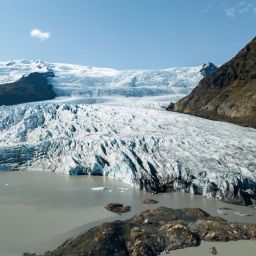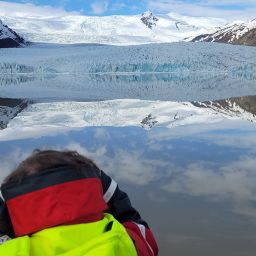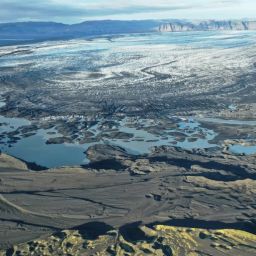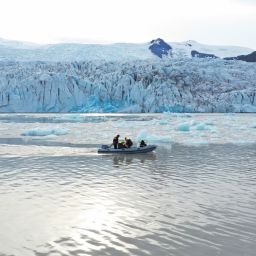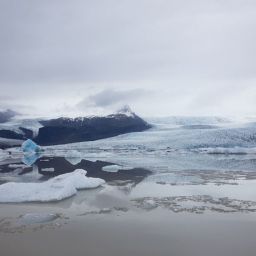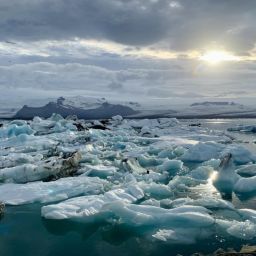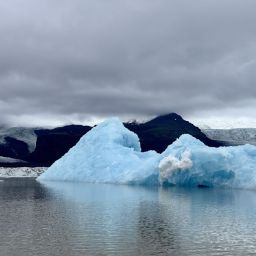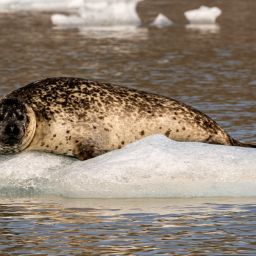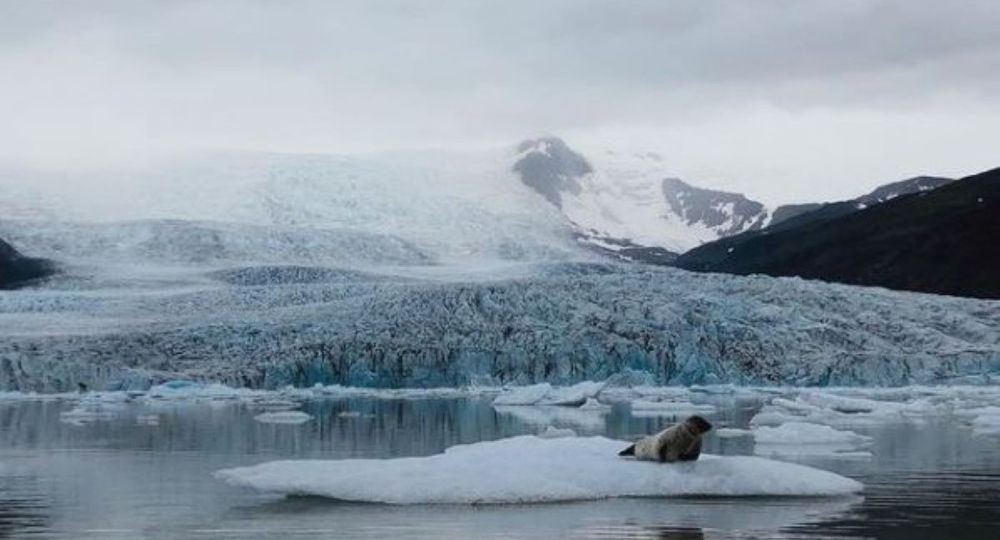
Glaciers are not the most inviting home or habitat for animals, therefore Iceland in general does not boost of the most flourishing wildlife in the world. Over the centuries wildlife and animals have adapted and evolved to survive in these harsh conditions.
Seals
There are two types of seals that have a permanent residency all year around in Iceland. They are called Harbor seals and Gray seals (also named the Atlantic seal). Harbor seals can often be seen during iceberg boat tours on Fjallsarlon. On warm days seals rest on top of the floating icebergs, sunbathing and relaxing for hours or swim around curious about their natural environment or visitors. The seals swim up a river from the ocean, we never know when they feel like showing up but are always a welcome sight. Fish have also been found in the lagoon but have mostly been caught in the river in the past.
Arctic fox
The Arctic fox was the first inhabitant of Iceland and the only land mammal that arrived in Iceland before people started settling in the country in the year 874. The arctic fox arrived in the country during the ice age when the icecap was solid reaching over Iceland and the Atlantic Ocean all the way to Greenland making an “ice bridge” between the two countries. The Artic fox spread all over the country and is found around Jokulsarlon and Fjallsarlon glacier lagoons. However, you are most likely to spot the Arctic fox in the Westfjords, Hornstrandir where they roam free, hunting or looking for eggs to feast on.
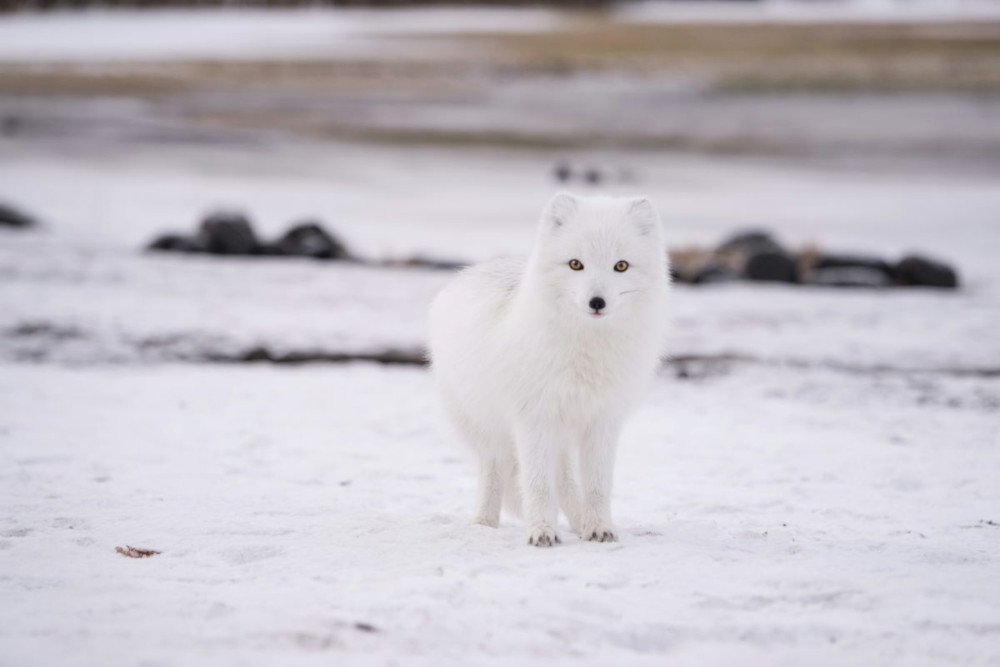
Artic Fox
Birdlife
Barnacle geese nest around the Fjallsarlon area during the summer season. Their behavior has been changing in the past years. The individual numbers have been growing steadily, nesting on flat offshore islands. Their main nesting area is in Greenland and Svalbard. In the last 10-15 years for some reason there started to be exponential growth in the numbers of geese in the area. You will notice them around Fjallsarlon, along the coastline with their young ones, we often see them on our tours during the summer season.
Great skua is a large bird that is also found in the area. It is not the most popular bird as it is known to be an aggressive, predator bird famed for steeling fish from other birds and protecting their chicks fiercely. Their main residence is in the black sands from Öræfi to Vík town.

Barnacle geese
Reindeer
During our Ice Cave tour, our guests have sometimes been pleasantly surprised by the occasional sighting of reindeer as we journey from Jokulsarlon to Breidamerkurjokull Glacier and the ice cave. Big heards travel the area east of Jökulsárlón during winter looking for moss, roots, and any vegetation to feed on. In summer deer stay mostly in the highlands in the Eastfjords around Snæfell mountain when then they have enough to feed on. The strength of this animal in the harsh winters, where grass is scarce, is both awe-inspiring and heartwarming. It’s a beautiful sight, especially considering the lack of wildlife during this dark winter season.

By Norbert, Reindeer near Fjallsarlon
The Icelandic sheep – always three together
When writing about wildlife in Iceland you can´t really skip mentioning the Icelandic sheep although it is a domestic animal. Foreign guests and tourists often wonder if they belong to anyone or if they are wild as they see them practically everywhere. They are farm animals but roam freely all over Iceland during summer.
Since I started guiding, I often get questions about the Icelandic sheep. One of the most common questions is why they are always three together?
The Icelandic sheep is different from other breeds in many ways and behavior. When seeing other sheep breeds in other countries, they tend to stay in big herds. It is an instinct they follow as there is safety in numbers from predators.
The Icelandic sheep does not really have a natural predator in the country, the only possible candidate would be the arctic fox and it is very rare they attack sheep. The Icelandic sheep can freely wander the lands without worry, a practice it has carried out for centuries while searching for grazing opportunities. Extensive regions of Iceland lacked vegetation causing sheep to spread and cover large areas in look for their next meal. But why three together? One eating grass, one sleeping and one on the guard? No, the answer is simply that it is a normally you will find a mother sheep with her two lambs. Fun fact, Icelandic sheep is one of the most fertile sheep breeds in the world.
The sheep have the tendency to stay close to the road. A good rule is when sheep are on both sides of the road to drive very slowly. If the lamb is on one side and the mother on the other there is almost a 99% chance the lamb will run straight over the road to its mother when it sees the car.
Mice
There are two types of mice in Iceland, the house mouse is the most common one and then the wood mouse. You will find mice all around Iceland, but an interesting fact is that mice did not exist in Öræfi until after 1974. I guess the same thing can be said about tourists in that area.
In Öræfi there were never any cats, the saying was that hey all died out of boredom as there were no mice to chase. The true reason is that that big glacier rivers such as Jökulsá and Skeiðará had no bridges and therefore the area was mouse free for centuries. One by one bridges over glacier rivers were built, the last one was over Skeiðará river in 1974. Soon after that, to people’s annoyance mice were all over Öræfi and not much later the tourists followed as well. I think everybody can agree that one of the species is more welcome than the other.
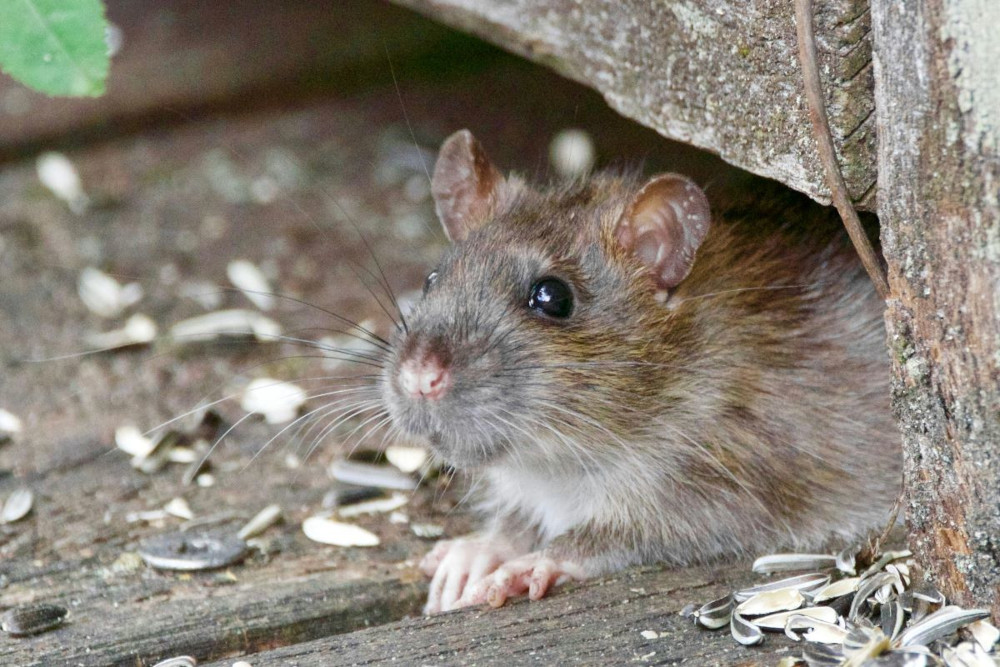
Mouse
The writer of this article is born and raised in Oraefi


